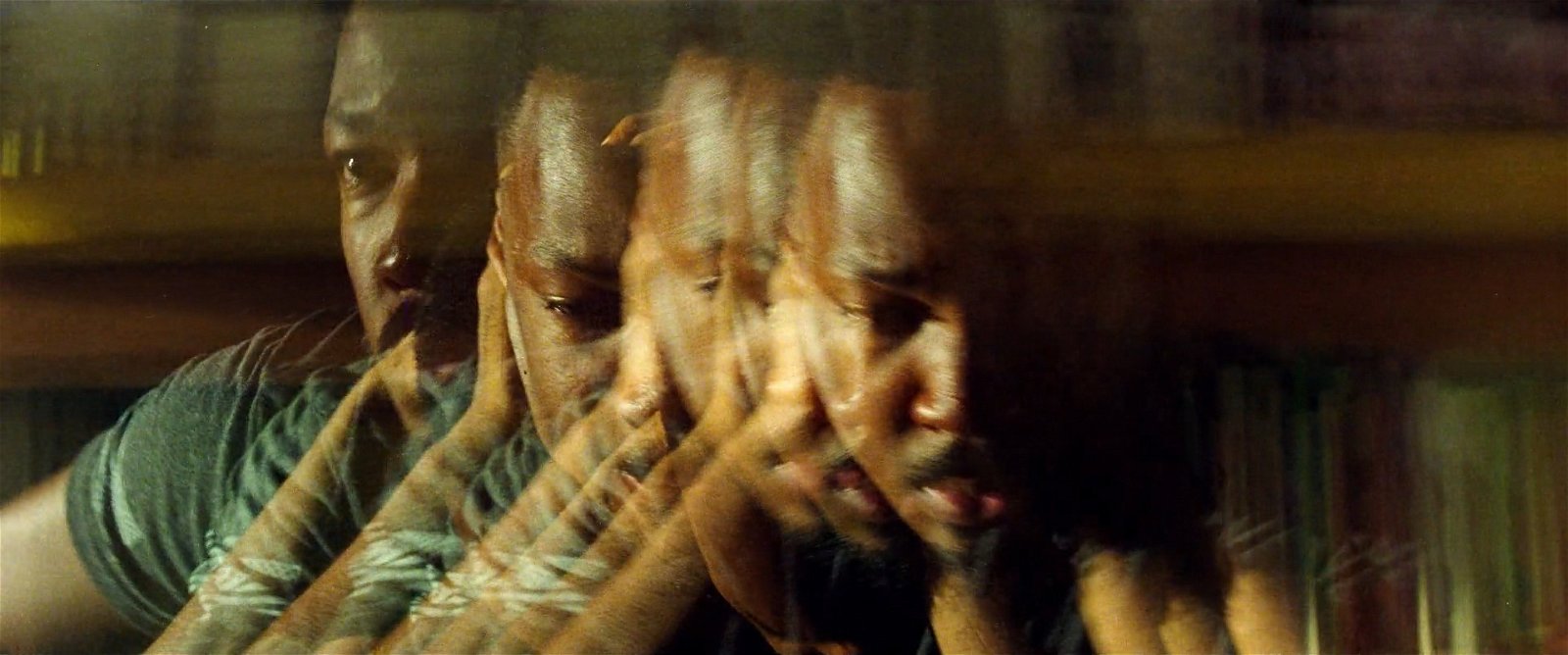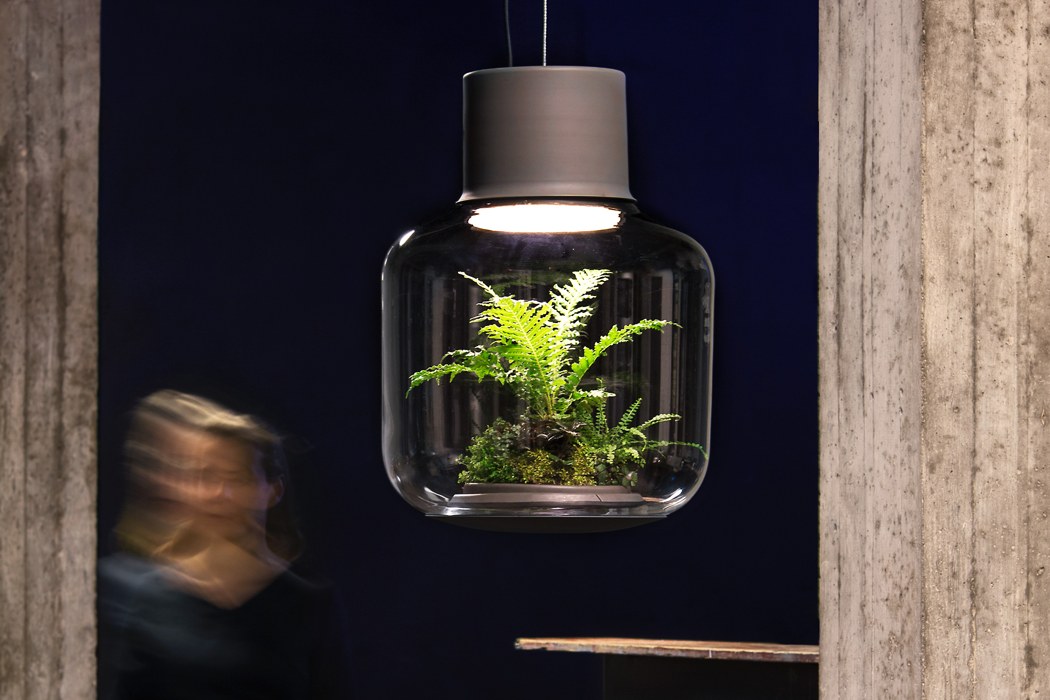Discover Pandipedia
Pandipedia is the world's first encyclopaedia of machine generated content approved by humans. You can contribute by simply searching and clicking/tapping on "Add To Pandipedia" in the answer you like. Learn More
Expand the world's knowledge as you search and help others. Go you!
Art has always been a reflection of the human experience, intertwined with the cultural and societal shifts that shape its context. Through the ages, artistic expressions have been deeply influenced by cultural movements, which have continually redefined the parameters of what art can convey and achieve. Below, we will explore how various artistic periods and movements have been influenced by changing social, political, and cultural landscapes.
Historical Foundations of Artistic Expression
From the Paleolithic cave paintings to contemporary installations, art has served as a chronicle of human history. These early artworks documented cultural practices and societal narratives, establishing a basis for artistic expression that has evolved over millennia. The significance of context cannot be overstated; it provides the lens through which art can be understood and appreciated. Early art was primarily a tool for acknowledging and recording experiences, laying the foundation for complex societal dialogues that would emerge in later periods[3].
The Renaissance: Rebirth of Humanism

The Renaissance marked a significant cultural shift in Europe, characterized by a renewed interest in classical philosophy and humanism. This era embraced the exploration of human potential, leading to masterpieces that celebrated human form and emotion. Artists like Leonardo da Vinci and Michelangelo leveraged perspective and realism to reflect their society's evolving values and aspirations[8]. This period not only emphasized the technical prowess of artists but also marked a shift in the subject matter, favoring depictions of individuals and an exploration of themes related to humanity over divine representations[6][11].
The Impact of Romanticism and Modernism
Emerging as a reaction against the strict ideals of Neoclassicism, Romanticism placed a premium on emotional depth and individual experience. Artists like Francisco Goya illustrated the tumultuous human condition through intense emotional imagery, thus capturing the essence of societal upheaval and personal struggle[10]. This focus on emotion paves the way for subsequent movements, as artists began to question established norms and explore the sublime aspects of nature and human experience[5].
The advent of Modernism further severed ties with traditional artistic conventions. Characterized by bold experimentation and the rejection of historical styles, Modernism embraced abstraction, fragmentation, and new forms of expression. Movements such as Cubism, established by Pablo Picasso and Georges Braque, deconstructed subjects into geometric forms, representing a departure from conventional perspectives and an embrace of contemporary life's complexities[8][10]. This radical shift reflected a broader cultural shift towards individualism and subjective experience.
Art as a Vehicle for Social Change

Throughout history, art has taken on the role of a vehicle for social commentary, often influenced by the pressing political and social issues of the time. From the Dada movement, which arose in response to World War I's chaos, to the Harlem Renaissance, which celebrated African American culture and identity, artists have used their work to reflect societal tensions and aspirations[4][9][11]. The Dada artists, for example, employed absurdity and nihilism in their works to critique the establishment and traditional values, thus rendering art a significant discourse on social critique[2].
In the 20th century, movements like Surrealism explored the unconscious mind and its relationship to reality, further pushing the boundaries of artistic expression. Artists such as Salvador Dalí utilized dream-like imagery to challenge societal norms and explore deeper psychological themes[8]. The interplay between art and psychology not only reflects individual experiences but also broader societal transformations.
Contemporary Art and Political Engagement
Contemporary art has continued this trajectory by increasingly becoming intertwined with activism and social justice movements. Artists today often refocus their work to address issues such as race, gender, and environmental sustainability, using their platforms to amplify marginalized voices and provoke critical public discourse[5]. For instance, artist Tania Bruguera engages communities in creating art that is not only participatory but also emphasizes social responsibility and activism[11]. This shift highlights a significant transformation in the role of the artist from a solitary creator to a facilitator of collective dialogue and action.
The use of visual language in protest materials, which includes vibrant colors and compelling imagery, has evolved into a vital aspect of modern activism. Art has become a rallying point for communities, enabling them to express grievances and demand justice. This collective approach to art increasingly positions it as a potent form of social change, capable of transcending barriers and fostering dialogue[9][10].
Conclusion

The relationship between cultural movements and artistic expressions is an intricate tapestry that reflects humanity's evolving values, struggles, and aspirations. As history shows, art does not exist in a vacuum; it is continually shaped by its socio-political context. Each movement, from the Renaissance to contemporary activism, showcases how art serves not only as a reflection of society but also as a powerful tool for initiating change. By understanding the interplay between culture and art, we can appreciate the rich narrative that has unfolded through human creativity and expression. As we move forward, the role of art as a catalyst for dialogue, transformation, and resilience remains vital in navigating the complexities of modern society[1][2].
Let's look at alternatives:
- Modify the query.
- Start a new thread.
- Remove sources (if manually added).
- Request a manual search from our human research team.
Cinematography, as a crucial element in filmmaking, significantly shapes how audiences perceive and interpret films. By strategically employing various techniques—ranging from camera angles to lighting and editing—filmmakers can manipulate emotions, guide attention, and construct narratives that resonate deeply with viewers.
Emotional Engagement Through Visual Techniques
The use of specific cinematographic tools directly affects the emotional landscape of a film. Close-up shots, for instance, are especially impactful as they create intimate connections between the audience and characters by capturing nuanced expressions and emotions. This technique allows viewers to understand subtle changes in demeanor, effectively conveying feelings without dialogue, thus enhancing emotional engagement ([5]).
Low-angle shots also play a critical role in establishing power dynamics within the narrative. By positioning the camera below the subject and looking up, filmmakers can make characters appear more dominant and imposing, thereby influencing how viewers perceive authority and threat in a scene. This manipulation of perspective evokes feelings of awe or intimidation and alters the audience’s emotional response to the narrative ([6]).
The Role of Lighting and Color
Lighting is another pivotal aspect of cinematography that profoundly influences audience perception. High-contrast lighting can establish a dramatic atmosphere, emphasizing tension and suspense, particularly in genres such as thrillers or horror films. Conversely, soft, diffused lighting evokes feelings of calmness, intimacy, or nostalgia, guiding viewers’ emotional experiences throughout the film ([1][6]).
Color symbolism further enriches this emotional engagement; different colors can evoke distinct feelings. For example, red typically symbolizes passion or danger, while blue may convey calmness or sadness. Filmmakers use these associations to craft emotional narratives that resonate on a personal level, shaping the viewer's response to the story ([1][9]).
Storytelling Structure and Audience Connection

At the core of effective cinematography is the underlying narrative structure, often guided by Aristotle's principle of the three-act structure. This format creates a cohesive journey that invites audience participation, where they mentally engage with the characters and storyline. The emotional investment stems from the film’s ability to present relatable situations and conflicts that evoke empathy ([5][8][10]).
Filmmaking techniques such as montage play a significant role in conveying complex emotions and ideas quickly. By juxtaposing different shots, filmmakers can manipulate viewers’ emotional responses and compress time, making cinematic storytelling punchier and more impactful. This method helps illustrate character development or shifts in narrative mood, facilitating a deeper understanding of the story ([6][8][9]).
Active Spectatorship and Multiple Interpretations

Active spectatorship, a concept highlighting the audience's role in interpreting film, underscores the subjective nature of viewing experiences. Each viewer brings their personal background, cultural context, and emotional state into the theater, which shapes their understanding of the film. This individualized perception allows for varied interpretations, making film a rich medium for diverse audience experiences ([8][10]).
Filmmakers often intentionally create ambiguity within their narratives, inviting viewers to draw their own conclusions. Films with open endings or complex character motivations allow audiences to engage deeply, encouraging discussions and varied readings. This dynamic interaction enhances the overall impact and longevity of a film's emotional resonance ([8]).
The Psychological Framework of Cinema
Psychological research supports the assertion that cinema elicits strong cognitive and emotional responses due to its collaborative nature. The synergy between storytelling, cinematography, sound design, and editing employs psychological principles that draw the audience into the film’s world. This interplay not only engages viewers on an emotional level but also reinforces their understanding of the narrative structure ([2][4][5][9]).
Cognitive theories propose that the viewer's mind actively constructs meaning during the viewing process. As audiences observe films, they employ cognitive schemas—mental frameworks based on previous knowledge and experiences—to navigate and understand cinematic stories. This process underlines the importance of familiarity with narrative conventions and genre expectations, influencing how effectively a film can communicate its message and evoke emotions ([1][3][8][10]).
Conclusion
The influence of cinematography on audience perception is profound and multifaceted. Through the strategic use of visual techniques—such as camera angles, lighting, color, and editing—filmmakers manipulate emotional responses and shape narrative understanding. By fostering connections between characters and audiences, employing storytelling structures, and encouraging active interpretation, cinema becomes a powerful medium that resonates emotionally and cognitively with viewers. The interplay between visual storytelling and audience engagement continues to evolve, reflecting the complex relationship between film as an art form and its impact on the human experience.
Let's look at alternatives:
- Modify the query.
- Start a new thread.
- Remove sources (if manually added).
- Request a manual search from our human research team.
Get more accurate answers with Super Search, upload files, personalised discovery feed, save searches and contribute to the PandiPedia.

Birch Christmas Tree Hanger
A streamlined tree that hangs on the wall, featuring faux snow and ideal for small spaces[1].

Slot together Light up Christmas Tree
A tiny, minimalist design that easily assembles into a centerpiece[1].

Black Wall Christmas Tree with Hooks
A slimline iron tree that can be mounted to save floor space, allowing for easy decoration[1].

Light Up Twig Tree
An elegant twig tree illuminated with warm LED lights, perfect for fuss-free holiday decor[1].
Scavenged Branch Tree
A rustic option built from foraged branches, filling the gaps with ornaments for a modern touch[2].
Wall-Mounted Branch Tree
A deconstructed tree made from branches, decorated with small ornaments, adding a minimalist aesthetic[2].
:max_bytes(150000):strip_icc():format(webp)/cardboard-christmas-trees-347a6d1c799346d6b184c883d0957e5f.jpg)
Cardboard Christmas Trees
Eco-friendly trees made from 100% recyclable cardboard that can be stored flat after use[2].
Layered Book Christmas Tree
Created by stacking books in a triangular shape, serving as a charming focal point[5][6].
Ladder Christmas Tree
A wooden ladder decorated with garlands and ornaments, a simple and creative alternative[5][6].
Christmas Tree Wall Stencil
A decorative wall stencil that creates a tree shape without taking up floor space[3].
Mini Paper Christmas Tree
A small paper tree that adds a festive touch to tabletops or sideboards[5].

Cacti Christmas Tree
A fun option where a cactus is decorated with lights and ornaments, allowing for year-round enjoyment[5].
Lighted Branches Tree
Use large branches adorned with fairy lights to create a versatile and easy-to-decorate alternative[2].
Upside-Down Christmas Tree
An unconventional design that hangs from the ceiling, adding a whimsical touch to holiday decor[4][6].
:max_bytes(150000):strip_icc():format(webp)/alternative-simple-christmas-tree-ideas-felt-d850bc526acc4384a2fd1889a53bd694.jpg)
Felt Christmas Tree
A playful felt cutout that children can decorate with Velcro ornaments, suitable for playrooms[5].
Modern Greenery Tree
Use evergreen branches on a wooden dowel forming a triangle shape, creating a fresh festive look[5].
Christmas Tree Art
A poster or artwork designed to resemble a Christmas tree, simple to set up and store away[2].
Garlands and Wreaths
Drape decorative garlands or hang large wreaths for a minimal yet festive alternative[4][6].
DIY Yarn Tree
Colorful trees wrapped in yarn, these are playful and easy to make for decorating small spaces[5].
Let's look at alternatives:
- Modify the query.
- Start a new thread.
- Remove sources (if manually added).
- Request a manual search from our human research team.
Berkshire Hathaway's operating earnings in 2024 were $47.4 billion. This figure emphasizes our focus on operating earnings over GAAP earnings and excludes capital gains and losses from securities held[1].
Let's look at alternatives:
- Modify the query.
- Start a new thread.
- Remove sources (if manually added).
- Request a manual search from our human research team.
Modern wooden furniture is designed with qualities such as sleekness, simplicity, and functionality, showcasing the natural beauty of wood without elaborate carvings. Its versatility allows it to complement various styles and spaces effectively, creating a subtle yet elegant aesthetic in any room[1].
Key design features include a polished surface that emphasizes clean lines while integrating materials like glass and metal for added appeal. Modern wooden furnishings are also designed to maximize space, often incorporating functional elements like tables and shelves, thus enhancing comfort and utility in living areas[1].
Let's look at alternatives:
- Modify the query.
- Start a new thread.
- Remove sources (if manually added).
- Request a manual search from our human research team.
AI browser agents can significantly impact knowledge worker productivity by automating repetitive tasks. Studies show that 72% of knowledge workers spend over 3 hours daily on these tasks[1]. Companies that implement AI automation may see productivity gains of 40-60% in knowledge-work tasks[1]. These agents work within the browser and integrate with existing workflows[1].
Specifically, companies using AI agents are reducing research time by up to 70% and increasing decision-making accuracy by 35%[1]. The goal is not to replace human intelligence but to augment it, acting like interns that remember everything and are always available[1].
Let's look at alternatives:
- Modify the query.
- Start a new thread.
- Remove sources (if manually added).
- Request a manual search from our human research team.
Get more accurate answers with Super Search, upload files, personalised discovery feed, save searches and contribute to the PandiPedia.
Let's look at alternatives:
- Modify the query.
- Start a new thread.
- Remove sources (if manually added).
- Request a manual search from our human research team.
Let's look at alternatives:
- Modify the query.
- Start a new thread.
- Remove sources (if manually added).
- Request a manual search from our human research team.
Let's look at alternatives:
- Modify the query.
- Start a new thread.
- Remove sources (if manually added).
- Request a manual search from our human research team.
Exercise positively affects mood by releasing feel-good hormones that reduce anxiety and stress, serving as a natural mood booster[5]. Studies show that even moderate physical activity, such as walking or gardening, can significantly lower the risk of depression and improve emotional well-being[2][4].
Regular exercise has been associated with substantial mental health benefits, including improved symptoms of mild to moderate depression[1][3]. The American Psychiatric Association supports exercise as an effective treatment, either alone or alongside traditional therapies[4]. Engaging in physical activities you enjoy increases the likelihood of maintaining a consistent routine, which is crucial for reaping long-term mood benefits[1][5].
Let's look at alternatives:
- Modify the query.
- Start a new thread.
- Remove sources (if manually added).
- Request a manual search from our human research team.

:max_bytes(150000):strip_icc()/rosenlund_0015-2ffdd6bc97d5421bb03549c0b28ac0a5-d11feb00f7f242faa98e1df06ef361b9-fe710c5883784c3d9a93f17a6a60c7a6.jpg)





















